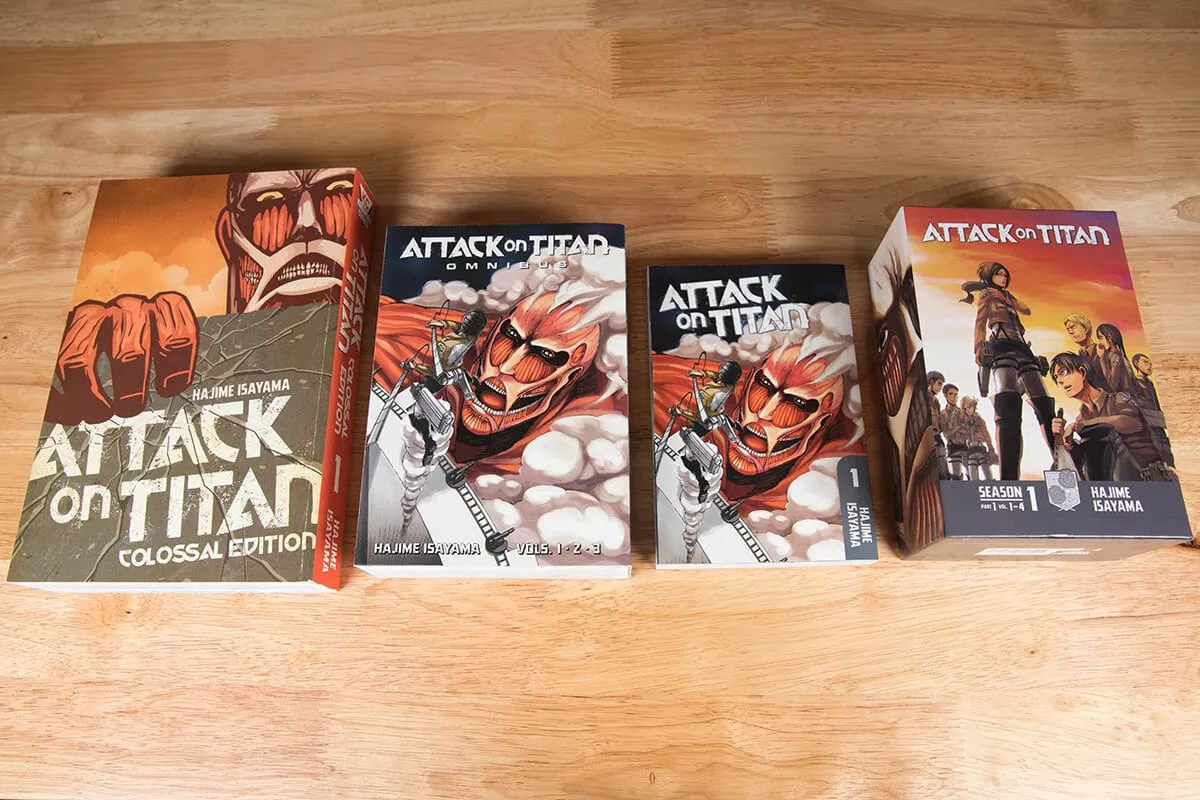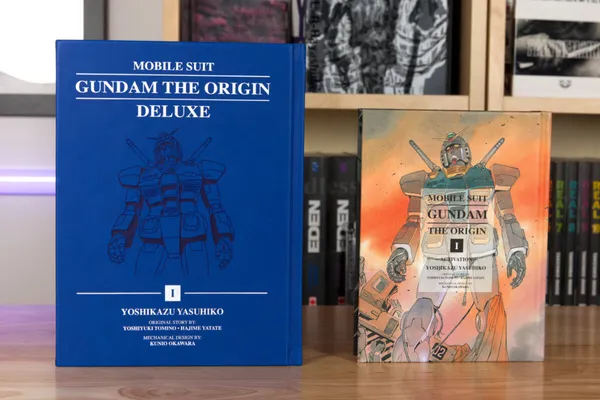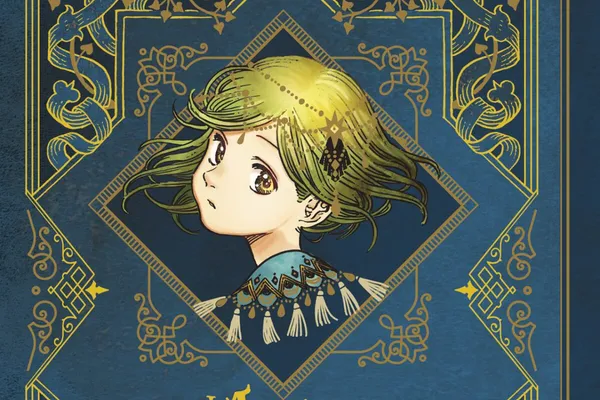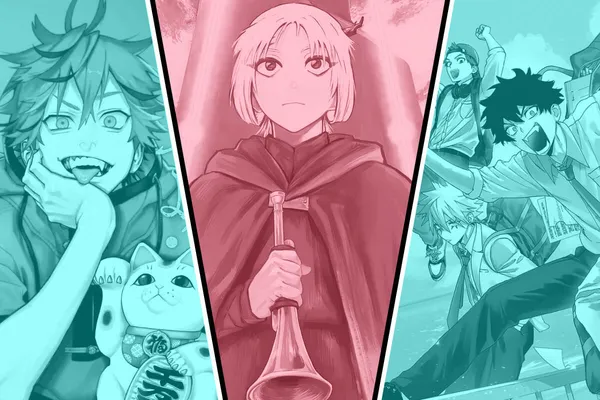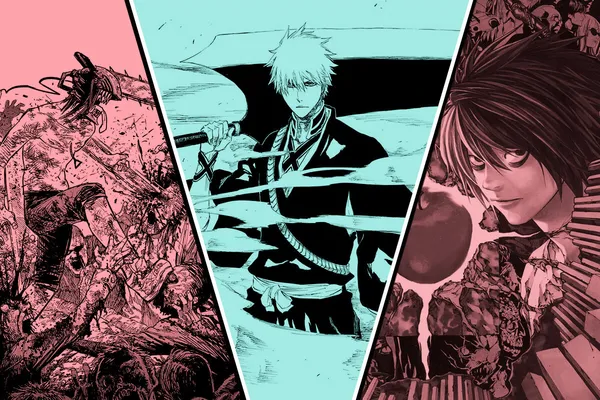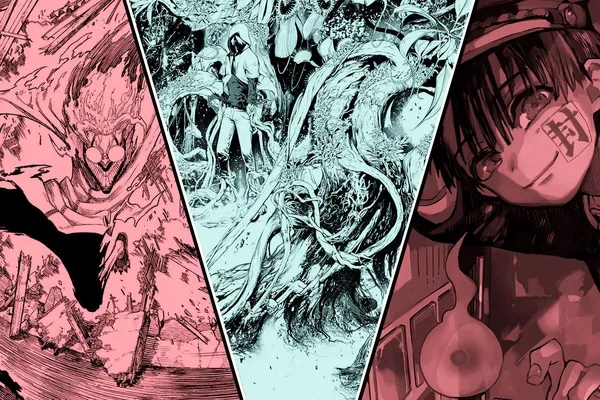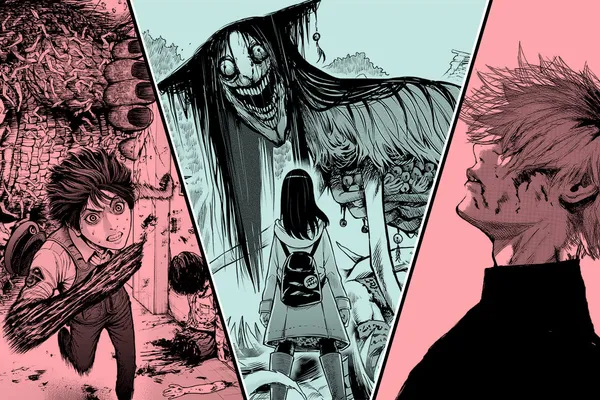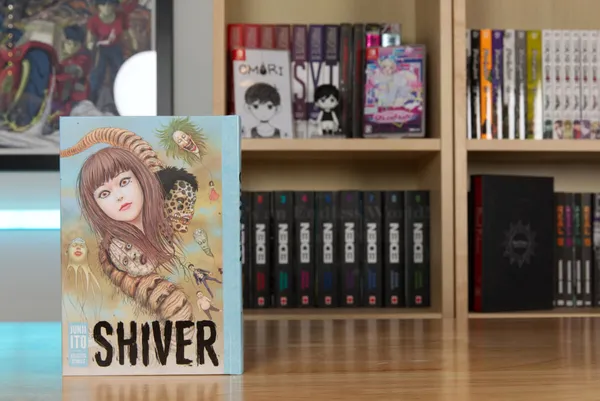Attack on Titan by Hajime Isayama is one of those once-in-a-lifetime series that has made a lasting impact not only on fans but on the industry as well. Not only has the Attack on Titan manga made waves, but its anime adaptation has also reached new heights, becoming the most popular TV show in the US the week its final season began airing.
With the manga complete and the final season wrapping up right now, it’s a bittersweet feeling—but there’s a lot to celebrate, especially given how much the series has grown and flourished over the years to become the colossal titan it is today.
Since the anime is finished, many people are wondering what they’re going to do next. If that’s you, we highly recommend getting into the manga if you haven’t yet. As it currently stands, four Attack on Titan manga editions have been released: the singles, the Attack on Titan manga box sets, the Attack on Titan omnibuses, and the Attack on Titan Colossal Editions so there are plenty of ways to get into the manga.
But what’s the best way to collect Attack on Titan? We picked up every edition and compared them side by side so we can find out!
Attack on Titan Background
Attack on Titan by Hajime Isayama released in Japan in 2009. It was translated in English by Kodansha shortly after in 2012. It has since become one of the best-selling manga of all time.
Upcoming Release — Attack on Titan: Definitive Hardcover Collection
This premium edition will feature three volumes in one hardcover with faux leather binding, gold foil stamping, and color pages not included in the Japanese release. Attack on Titan already has four different editions to collect (see below), and we’re excited to see how these stack up as the premium option we’ve been waiting for. The debut is set for Spring 2026, and once it’s released, we’ll update this post with our full review.
Ways to Collect Attack on Titan
Attack on Titan has been published in English in four different formats. Kodansha first released the paperback singles of Attack on Titan in 2012, with a total of 34 singles in the series. Then, the Attack on Titan manga box sets began releasing. These correspond to the seasons of the anime, collecting the volumes that cover the material in each season, and fully collecting the series in six box sets.
The Attack on Titan Colossal Editions came next. These oversized 5-in-1 editions will collect the series in seven volumes. We have an individual review of the Attack on Titan Colossal Editions as well, for those who’d like to check that out. The most recent edition to release is the Attack on Titan omnibuses, which are 3-in-1 volumes.
You can also shop Attack on Titan on Kindle and comiXology, or purchase it digitally through other sites when they run manga bundles, such as Fanatical. Currently, Fanatical is offering a Attack on Titan Mega Manga Bundle that includes the entire Attack on Titan series (all 34 volumes), as well as Junior High and Before the Fall, for only $20 through August 31, 2025.
Next, we’ll go over what’s different about each of the Attack on Titan manga editions and how they compare.

Attack on Titan Manga Editions Compared
Design
The Attack on Titan Colossal Editions have completely new designs and artwork. Each Colossal Edition features a different Titan: Colossal Edition 1 has artwork of the Colossal Titan looking up over the wall, 2 features the Female Titan, 3 the Armoured Titan, 4 the Beast Titan, 5 the War Hammer Titan, 6 the Jaw Titan, and the artwork for 7 has yet to be officially revealed. The covers have a matte finish.
Unfortunately, due to the way these covers were made and the weight of the volumes, they are prone to damage if not handled carefully. These really needed to be hardcovers, and we hope to see a hardcover release of AoT in the future.
The box sets, of course, have the same covers as the individual paperbacks since they collect those editions. When it comes to overall design, we prefer the look of the individual paperbacks over the Colossal Editions. Unlike the Colossal Editions, which have a matte cover, the paperbacks have a glossy finish.
Another thing to note is that there are individual paperback exclusives for select volumes that feature variant covers or extras. For instance, there’s a Books-A-Million exclusive of Volume 34 with unique artwork of Eren on the front cover, and a Kinokuniya exclusive variant of Volume 34 that shows all of the characters together and includes extras. There’s also an exclusive Volume 34 through Barnes & Noble, but that one comes with extras inside rather than a different cover. This means there are multiple options for a few of the paperbacks thanks to the exclusive variants that have been released.
The omnibuses feature the same artwork found on some of the singles. Omnibus 1 uses the same cover art as Volume 1’s paperback, while Omnibus 2 will feature the artwork from Volume 5. It appears Kodansha is selecting the cover they think best represents the three paperbacks each omnibus collects. The lettering on these omnibuses is raised, which is unique to this edition. Like the paperbacks, the covers of the omnibuses have a glossy finish.
Time to Collect
The singles, Colossal Editions, and box sets are all fully released, so for anyone wanting to read Attack on Titan as soon as possible, these are the way to go. The Colossal Editions consist of seven oversized volumes, each collecting five volumes of the series in a larger format. The box sets, which correspond to the seasons of the anime, were completed with the release of The Final Season Part 2 box set on November 1, 2022.
The omnibuses began releasing in October 2021, and so far they appear to be on a three-month release schedule. Since each omnibus collects three volumes of Attack on Titan, there will likely be 11 omnibuses in total, depending on how the final volumes are split. On this schedule, and assuming no delays, it will take around 2.25 years to fully collect the series through the omnibus editions.
Price
Retail cost for the Colossal Editions tends to be $49.99 USD per volume, with each collecting five volumes. Colossal Edition 1, however, is $59.99 USD at retail, most likely because it’s the only one that includes full-color pages. The rest of the Colossal Editions are $49.99 USD each.
The omnibuses retail for $19.99 USD and collect three volumes, while the individual paperbacks are $10.99 USD per volume. The manga box sets, which typically collect four to six volumes per set since they correspond to the seasons of the anime, retail anywhere from $43.96 to $65.94 USD.
Breaking that down by retail cost per volume: the Colossal Editions are approximately $10 USD per volume, the omnibuses are $6.66 USD per volume, the individual paperbacks are $10.99 USD per volume, and the box sets average $10.99 USD per volume regardless of how many volumes they collect.
Based on retail prices, the box sets don’t offer any savings compared to buying the individual volumes—unless purchased at a discount, which is often possible when they’re in stock.
The biggest savings comes from the omnibuses, which was a surprising discovery, as box sets are usually the best value. If you’re looking for the cheapest way to collect Attack on Titan, the omnibuses are the most affordable option, followed by the Colossal Editions (even if only marginally), then the box sets and the individual volumes, which are evenly priced per volume at retail.
Where to Buy

Size
One of the biggest differences between the Attack on Titan manga editions is their size. The individual paperbacks, which can be purchased separately or as part of the box sets, measure about 5.08 x 0.68 x 7.38 inches. The omnibuses are slightly larger at 5.7 x 1.90 x 8.10 inches, while the largest format currently available is the Colossal Editions, which measure 7 x 1.80 x 10.50 inches.
Quality & Sturdiness
Both the Attack on Titan Colossal Editions and omnibuses are quite prone to spine and cover damage due to their size and weight. The individual paperbacks are the most sturdy of the three formats, as they’re smaller and easier to handle. When shopping for the first omnibus, we sifted through ten copies before finding one without any spine damage.
The same goes for the Colossal Editions when buying them in-store, although we’ve had better luck receiving high-quality copies when ordering through select sites that package manga well. Amazon, however, is a different story—Colossal Editions from them have often arrived with significant damage. It all comes down to where you preorder your volumes, so it’s worth reading up on which manga sites and bookstores have the best shipping practices.
That said, while it’s harder to get the Colossal Editions and omnibuses in pristine condition, it’s not impossible.
Another consideration is handling. Due to their weight, the Colossal Editions need extra care when being slid on or off a shelf to avoid damaging the spine or covers. Their paperback covers are also prone to denting and folding at the edges. In terms of quality and sturdiness, the clear winner is the individual paperbacks, which are also available in the box sets.
Readability
A common assumption is that the larger the format, the more readability issues there will be. This can be avoided with a hardcover, sewn-binding release, like the Berserk Deluxe Editions, but unfortunately, the Attack on Titan Colossal Editions are paperbacks with glued binding and no eye. Hopefully, this is something that will be addressed with the upcoming Definitive Hardcover Editions of Attack on Titan.
With how thick these volumes are, they would have greatly benefited from a hardcover, sewn-binding format. As they stand, the Colossal Editions have the most issues with readability, especially at the beginning of the volumes. Once you get further in, they become easier to read, but we still found ourselves turning our heads at odd angles to fully see the panels and text early on.

Print Quality
When it comes to print quality, the Colossal Editions are the clear winner. The individual paperbacks rank the lowest, and while they still look good, much of the fine detail is lost—particularly in highly shadowed or high-contrast areas, as shown in the YouTube video below.
The omnibuses come in second for print quality, while the singles are at the bottom. In the singles, the blacks are often too dark in certain areas, causing the details and mid-tones to get lost compared to the other editions.
The Colossal Editions are printed on white glossy paper, whereas the omnibuses and singles use off-white paper with an eggshell-like finish. The paper quality in the Colossal Editions is the best by far.
Overall, the Colossal Editions deliver the strongest contrast, with crisp, bold panels. The blacks are deep while the mid-tones remain present, allowing the details in Hajime Isayama’s artwork to stand out more vividly.
Of course, pictures speak louder than words, especially when it comes to print and page quality, so be sure to check out the video at the end of this post to see how they compare firsthand.
Artwork & Cropping
Hajime Isayama’s art is incredible in any format, but the Attack on Titan Colossal Editions make it look even more stunning. The larger format allows for greater detail to come through, and we feel the Colossal Editions do Hajime Isayama’s artwork more justice than the paperbacks or omnibuses.
When comparing them side by side with the other formats, it’s clear how much more impactful the panels look in the Colossal Editions.
The omnibuses, with their slightly higher print quality than the singles and their larger format, come in second. As with most manga, the larger the format, the more detail you can see—and Isayama’s art looks especially striking when blown up. That said, if your priority is experiencing Attack on Titan’s artwork in the largest possible format, the Colossal Editions are the way to go.
In terms of cropping, there are slight differences between editions. Horizontally, the Colossal Editions are the most cropped, the singles are the second most cropped, and the omnibuses are the least cropped. Vertically, the singles are the most cropped, the Colossal Editions are the second most cropped, and the omnibuses are again the least cropped. Overall, the omnibuses are the least cropped version of Attack on Titan.
You can see examples of the cropping differences in each edition in the YouTube video below.

Extras
In terms of extras, the standard paperbacks include some commentary, interviews, character sketches, and other bonus content throughout the volumes. Retailer-exclusive volumes can come with additional extras, such as the Barnes & Noble exclusive Volume 34, which includes an exclusive poster.
Everything printed in the individual volumes is also included in the omnibuses, so the omnibuses don’t contain any new material.
As for the box sets, the only extra included with the Attack on Titan Box Set 1 is a sticker set, but later box sets feature different bonuses. For example, the second box set includes a double-sided poster. While these are nice touches, box sets from other publishers often include more substantial extras than those found in Kodansha’s standard releases. The Akira manga box set they released, however, is an exception with far more impressive extras.
Finally, the Colossal Editions feature some unique material. Colossal Edition 1 contains beautiful full-color pages sprinkled throughout the volume, and Colossal Edition 2 includes an eight-page color crossover with the superheroes of Marvel’s Avengers at the end. The remaining volumes, however, do not feature any extra content. Of the set, we think the first Colossal Edition stands out the most thanks to those full-color panels.
For more bonus content, check out our review of the Attack on Titan 35 FLY Box Set, which includes a hardcover artbook and additional extras.
Final Verdict: What is the best way to collect the Attack on Titan?
It ultimately depends on what you’re looking for.
If you want the cheapest way to collect the series, the omnibuses are the best option. If you prefer large formats and want the best way to experience Attack on Titan’s artwork—or the highest print quality—the Colossal Editions are the way to go. If your priority is reading the full series as soon as possible or collecting all the individual covers, the paperbacks are the best choice. The box sets are great if you like to bulk purchase volumes and want the included extras, but at retail price they don’t offer any savings compared to buying individual paperbacks.
Our pick? The Colossal Editions are the standout release so far. Despite their issues, we love large-format manga, and the artwork looks stunning in these editions—not to mention the print quality is unmatched. That said, we’re still hoping for a hardcover, sewn-binding release of Attack on Titan someday.
If you’re ready to pick up any of the Attack on Titan manga editions, you can shop them now at one of the stores below. For more details on each retailer, check out our guide to the best manga bookstores and sites.
